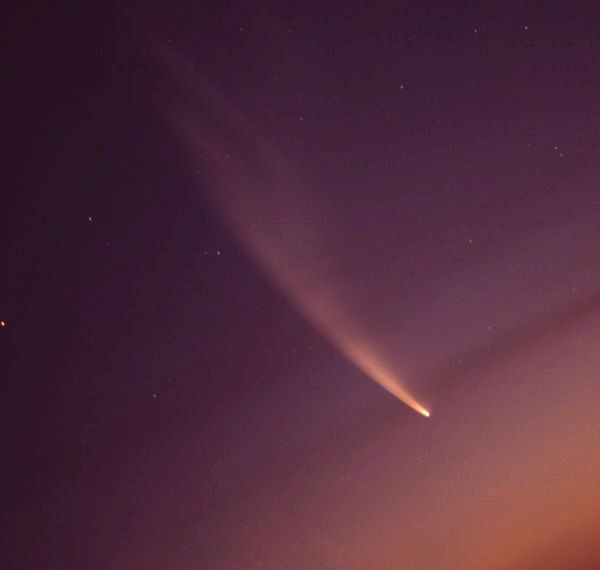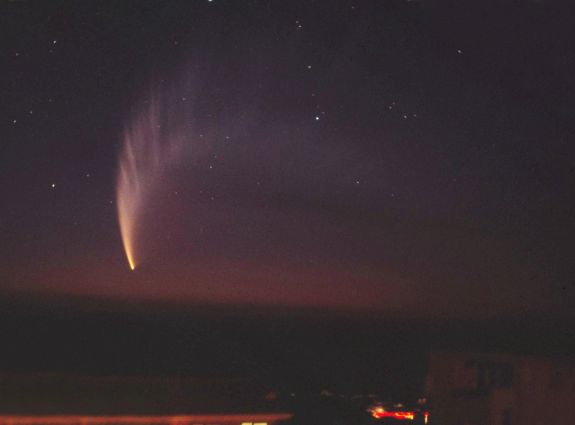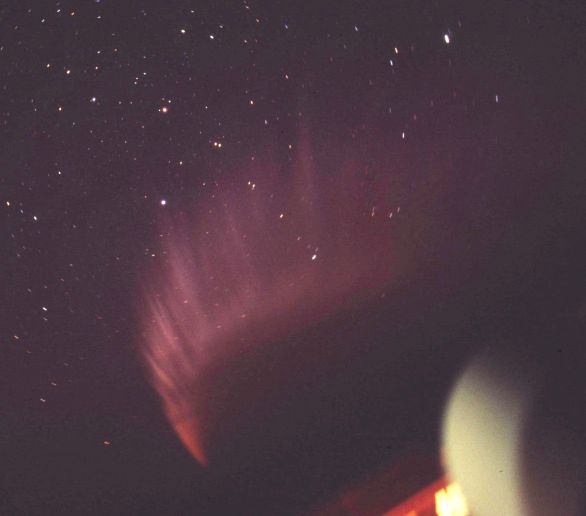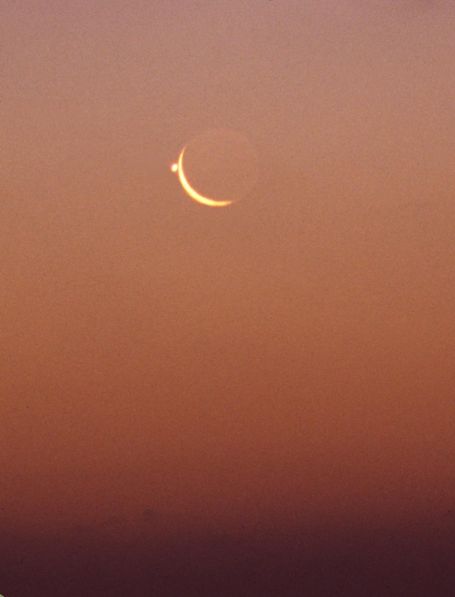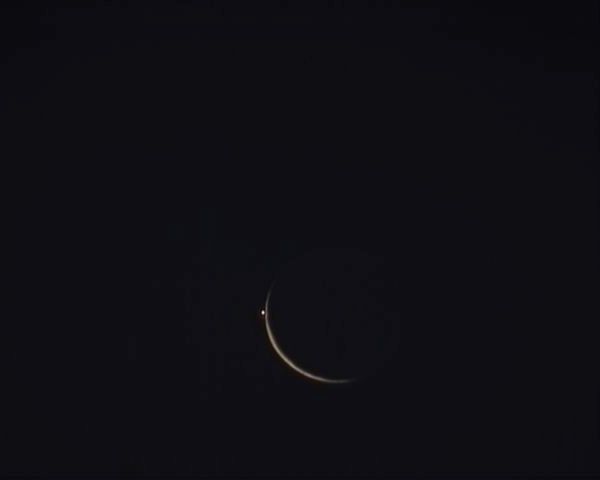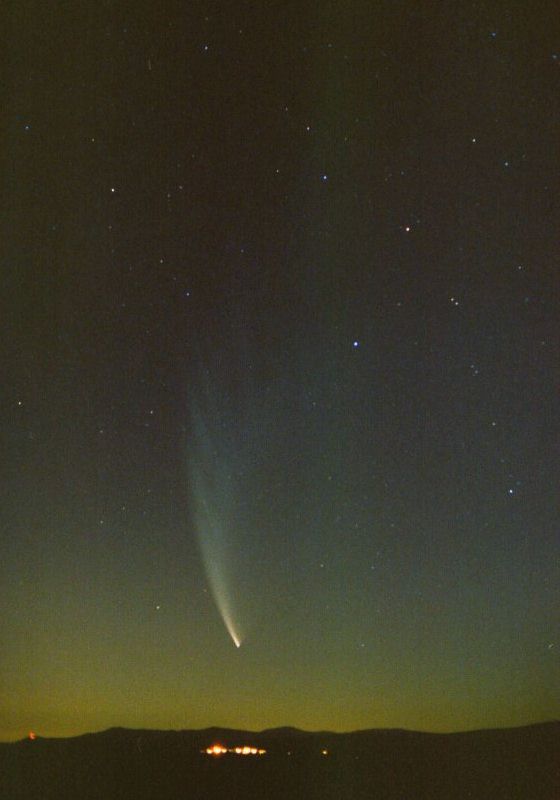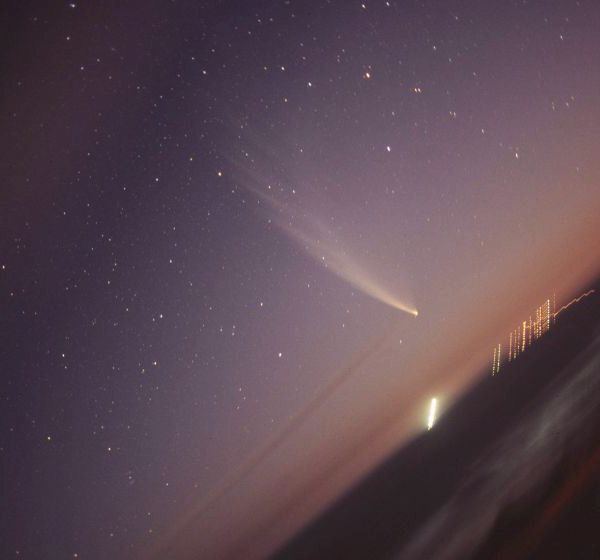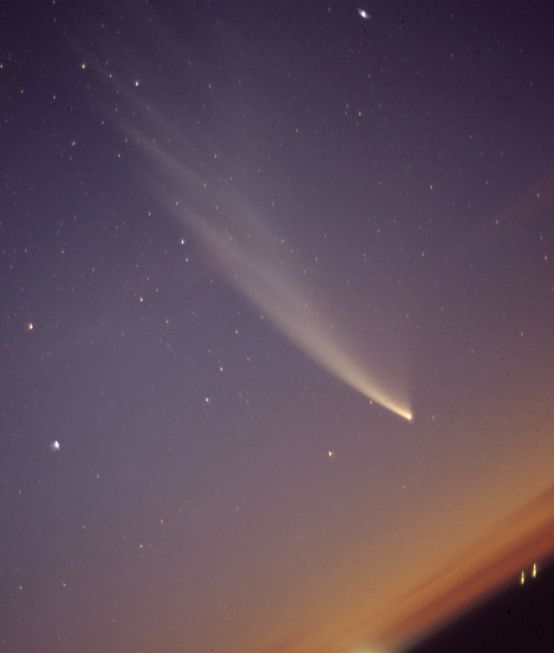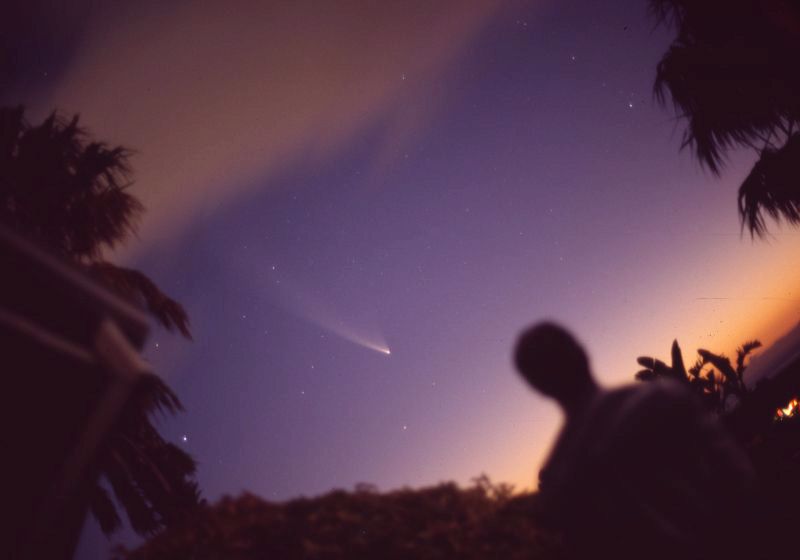From January 16-30 Boelie Boelens and myself made a hastely arranged trip to South-Africa after
it became clear in early January that after perihelion passage comet McNaught very likely would become a bright object for southern
hemisphere observers.
And we were not disappointed, to put it mildly....
Our first 5 days were spent close to the most southern tip of Africa, in Pearly Beach, in the very
pleasant B+B of Otto Dünnebacke.
Especially the Breakfast part was great!
Pearly Beach is a small village without public lighting (!), surrounded by beautiful, almost deserted beaches.
>From our B+B we had a virtually unobstructed view of the southwest horizon and most importantly, the comet.
Unfortunately, on most evenings cloud forming over the Atlantic Ocean did interfere with our observations,
but on the 20th we had really great views of an amazing comet.
To the naked eye, and particularly in binoculars, it showed a stunning amount of detail in the widely fanning
dusttail, not seen in any of the great comets of the last 100 years or so.
The first three pictures to the right were taken on this evening by Boelie on 100 ASA colour slide film with 135mm f/2.8 (30s in twilight) and 28mm f/2.8 lenses (3m and 3.5m).
* * * * *
Earlier the same evening, much to our surprise, we witnessed the reappearance from behind the Moon of Venus,
some 45 minutes after sunset. Our Astronomical Almanac (Sterrengids 2007) which we checked after returning home,
wondering why we did not know of the occultation, gave South-America as the place to be to see this event.
Ah well, it had most of the letters right....
The event was recorded both on colour slide (first image) and video.
The latter image was prepared from the original footage by Roelof Mink with Registax4.
* * * * *
On the January 22 we had moved west, and stayed on a farm in the countryside west of Harmon, some 80 km north of Cape Town. From a quiet dirt road among the vineyards I imaged the comet with a 50mm f/1.2 lens on Kodak GC400 colourfilm. The 15s exposure showes the comet over low hills to the southwest. By this time the moon started to interfere. Visually, the bright southern part of the tail still showed a tremendous amount of detail, but the fainter parts to the north were lost by now.
* * * * *
Our next location was Yzerfontein, on the coast north of Cape Town, where we stayed 2 nights.
On January 23 Boelie took the following two images. The first one is a 4m exposure with a 28mm f/2.8 lens,
and the second one is a 2m exposure with a 50mm f/1.7 lens.
They clearly show that more and more of the tail is lost due to moonlight.
The bright trail below the comet was caused by the lighthouse of Dassen Island.
* * * * *
The last days of our trip were spent close to Cape Town. We stayed in Noordhoek which is on the coast (with some spectacular scenery nearby!) some 30 km to the southwest. From there we made trips to the Cape of Good Hope, Table Mountain, and the wine region near Stellenbosch.
We had excellent weather here, and were able to view the comet every evening. The last image below was taken from Noordhoek on January 28 in strong moonlight. It is a 30s exposure with the 28mm f/2.8 lens.
Only the brighter southern part of the tail is still visible.
We had our final view of the comet on the evening of January 29 from behind our hotel close to
Cape Town airport. The Moon and nearby lights of the airport were strongly interfering, but in
10x50B the tail could still be followed over more than 5 degrees.
The next day we flew back home, with memories of a great comet that we will cherish for the rest
of our lives.
Thanks are due to Eric Limburg for scanning the slides, and Bert van Dijk for improving the images in Photoshop.
Reinder J. Bouma, 26 February 2007.* * * * *
